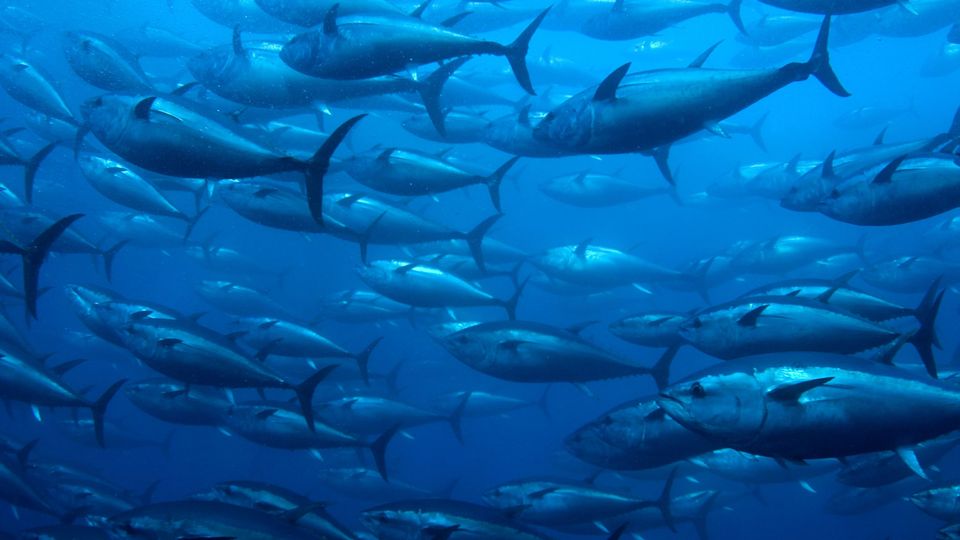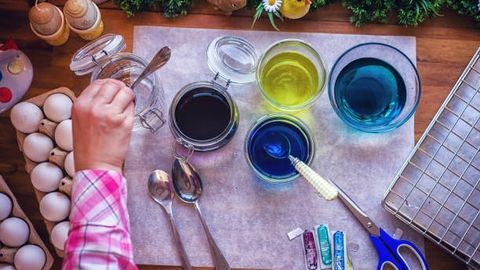Cell Line Development Is Transforming the Future of Seafood Production
A new solution is needed to provide the global population with safe and nutritious seafood that alleviates the pressures on our fish stocks and ocean ecosystems.

Complete the form below to unlock access to ALL audio articles.
The world’s seafood supply is under threat, with the UN estimating a 28 million metric ton gap in the amount of seafood needed to feed our growing population by 2030. Threatened by overfishing, a warming climate, an increasingly polluted marine environment, rising ocean temperatures and other significant ecosystem disruptions, seafood now contains contaminants such as microplastics, mercury, oil from spills, nuclear waste and polychlorinated biphenyls that further compromise our seafood supply as these toxic substances inevitably make their way into the food web.
A new solution is needed to provide the global population with safe and nutritious seafood that alleviates the pressures on our fish stocks and ocean ecosystems. Advances in food cultivation techniques make these safer food alternatives possible while allowing marine wildlife to remain in the ocean to restore and replenish their populations. The future is cell-cultured seafood.
Cell-cultured seafood, is made directly from fish cells through a process known as cellular agriculture. It starts with a small tissue sample from a living fish, which is then cultivated in bioreactors to grow sustainable, high-quality and authentic seafood.
Selecting and developing the best cell lines by engineering them to make the highest quality food isn’t a new practice. Cells are the building blocks of most conventional food and beverages, and single-celled organisms are regularly used to create high-quality sources of nutrition like bread, yogurt and cheese.
By following guidelines proposed by the World Health Organization, the US Food and Drug Administration (FDA), and the European Union, food manufacturers can now augment and improve food from the natural world to expand the food supply sustainably. At large scale, cell-cultured meat has the potential to be produced with 96% fewer greenhouse gas emissions, 45% less energy, 99% less land use and 96% less water use than conventional meat.
Although limited in volume, cell-cultured chicken is already available to consumers through select restaurants in the United States following the FDA’s 2022 announcement that poultry produced by cell-line culture is safe to eat and the US Department of Agriculture’s (USDA’s) announcement regarding the inspection, sampling and regulation of cultured meat in June 2023. The extensive data collection required to meet the FDA’s strict safety standards is as equally demanding as it is for farm-grown food. Developed using processes that mirror those in the life sciences, this meat could be a safer, more sustainable and more humane solution for feeding billions of people while minimizing environmental damage.
Cell-cultured seafood: Innovation benefits from proven technologies
BlueNalu, a global leader in the development of cell-cultured seafood located in San Diego, California, strives to provide consumers with great-tasting, healthy, safe and trusted products that support the sustainability and diversity of the ocean, starting with its first product, bluefin tuna toro. With cell line development at the core of the cultivated protein space, the company relies on Molecular Devices’ technologies and expertise in producing, characterizing and scaling biologics to achieve regulatory approval and make these new food sources widely available.
The cell-cultured meat process starts with collecting a small sample of live animal cells from which the desired cell type is isolated via manual techniques or more efficiently using automated single-cell dispensers. The cells with the most desirable, manufacturing-ready traits, such as fast growth and high viability, are then monitored using imagers and allowed to grow into a monoclonal cell population – a process that helps to ensure the best cell quality, safety and stability. These cells are then placed in a nutrient-rich culture media where they continue to expand in number, effectively creating a renewable food source.
Verifying that the cultured meat cells are genetically uniform – achieved using a process known as monoclonality – helps select only the safest, strongest and fastest cells to produce the cultured meat. Not all cells collected from the animal will display the features needed to produce a robust product that tastes like the meats we are accustomed to eating. Therefore, it is important to isolate and select the single-cell-derived culture that displays the most favorable features to make great-tasting meat. The process of isolating single cells and growing them into genetic cell cultures is a critical factor in safety testing put forward by regulatory agencies.
A monoclonality assurance workflow involving single-cell dispensing followed by imaged-based verification of clonality and growth rates allows BlueNalu to cut its process from a manual, time-consuming five or six weeks down to just two. Easy-to-use software allows for seamless navigation of single-cell dispensing and monoclonality verification processes, which yields objective results that aren’t open to individual interpretation. This improved workflow eliminates the possibility of using mixed population cells and builds confidence in the purity of the single-cell culture.
This kind of verification process also supports tracking the growth rate of the cells. Choosing the strongest cells is key to ensuring reproducible cell lines. Once achieved in the lab, those cells must remain robust so that they can be repeatedly grown. The resulting data verifies the cells at every stage, providing the required documentation for regulatory purposes.
Genetic stability is important for food safety because once all characteristics of a cell line are known, the manufacturing process can address any potential risk. In an industry that faces significant challenges from illegal, unregulated and unreported fishing that enables mislabeling rates as high as 33%, this verification guarantees the identity of the seafood product and ensures the consumer receives what’s expected.
Efficiency: Scaling seafood cell lines with automation
Incorporating automation into cell line development can speed up and increase quality control within a laborious and complex process. Eliminating the component of human errors that can result in batch-to-batch variability and contamination are examples of critical risks not only seen in food safety but also in the drug discovery process.
Using similar processes to ensure the highest standards of safety and robustness employed by pharmaceutical companies to bring safe and effective therapeutics to market faster, sustainable meat, poultry and seafood can be equally safe and accessible. Recent technological innovations are already being adapted to meet the needs of the cultivated protein industry.
For example, fully automated cell line development workcells make it possible to increase scale, reduce human error and improve productivity with the touch of a button.
Safety: Preparing cell line development to go mainstream
To ensure food safety, the right technology must be selected for each stage of this process: from single-cell isolation, to verifying monoclonality for FDA regulation, to growth monitoring and quality control.
Traceability – tracking the cell lines from initial cultivation to the final product – is vital to meet or exceed the rigorous regulatory standards set for traditional meat. In-depth, multi-stage analysis equips scientists with crucial data necessary for FDA and USDA regulatory submissions. A data-driven control process throughout ensures the same great, safe product over time.
This kind of reliable cell-cultured production, which has long been used in cell line development for life sciences, has the added benefit of not requiring the addition of antibiotics or hormones. It also eliminates the possibility of exposure to environmental contaminants in the air and groundwater, which are unavoidable in ordinary farm-raised or wild-caught settings. However, the complexity of processes required to match the flavor, texture and nutrients of numerous seafood varieties is challenging.
The path ahead: Healthier food, healthier people, healthier planet
Bluefin tuna, especially the fatty belly cut known as toro, is in high demand, leading to the species facing critical challenges. Concern is growing regarding the severe impacts of a permanent loss of this apex predator on marine ecosystems, biodiversity and food security for millions of people around the world. The replication of bluefin tuna using cell culturing could relieve these pressures on the species while also preparing the way for more diverse seafood manufacturing.
While there aren’t any companies manufacturing cell-cultured seafood for purchase yet, several companies are working on this promising technology, and many in the food industry are excited about the possibility of a consistent supply of high-quality seafood that eliminates the negative effects and health concerns associated with industrial fishing. By using proven technologies and established processes in cell line development, these products may be in restaurants and on consumers’ plates very soon.
About the authors:
Courtney Benson, PhD, is the associate director of R&D at BlueNalu.
Dwayne Carter, PhD, is a field applications scientist at Molecular Devices.
Lauran Madden, PhD, is chief technology officer at BlueNalu.




